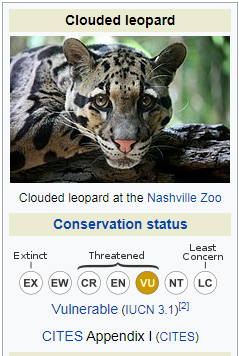Free Courses Sale ends Soon, Get It Now


Free Courses Sale ends Soon, Get It Now



Copyright infringement is not intended
Context: A clouded leopard photographed near the summit of Mt Saramati in Nagaland’s Thanamir village.
About clouded leopard (Neofelis nebulosa):
https://indianexpress.com/article/north-east-india/nagaland/clouded-leopard-sighted-nagaland-mountains-7709328/
© 2024 iasgyan. All right reserved